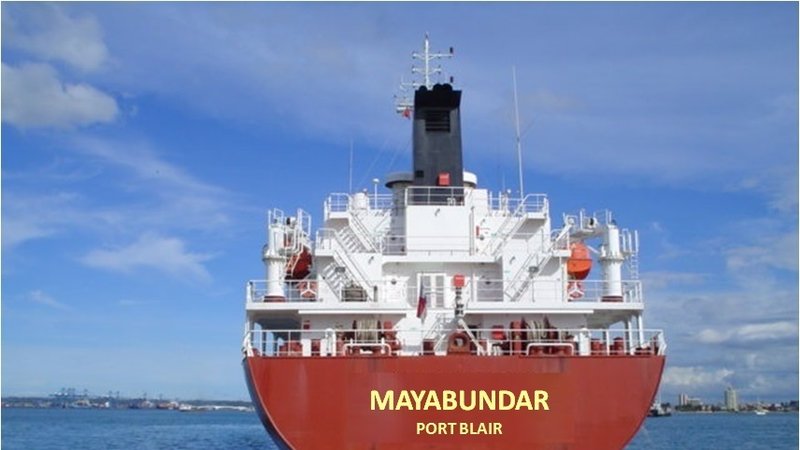A sovereign nation has the authority to regulate all vessels that fly its flag on the high seas. Congress, accordingly, is empowered to enact legislation controlling domestic merchant ships that sail the high seas. Title 46 of the United States Code Annotated, entitled Shipping, contains most of the pertinent federal laws regarding U.S. shipping.
All the ships in the U.S. merchant fleet are registered in the United States and completely staffed by U.S. citizens. Because of the higher labor costs associated with employing U.S. personnel, many ships are registered in other countries to avoid this labor requirement.
Ships can be owned by either one person or co-owners. Because of the enormous cost of merchant vessels, the majority are held by more than one owner. A bill of sale is the ordinary evidence of title to, and ownership of, a vessel. Between co-owners, the right to control and use the vessel is generally reserved for the majority interest. In the event that co-owners absolutely cannot come to an agreement on how to use the vessel, one or more of them may obtain a court decree for sale of it. In general, however, a part owner shares in the profits and expenses from use of the ship in proportion to her interest.
Agents
The owners of merchant vessels are bound by the acts of their agents and must pay for all services, supplies, and repairs that they order. A ship’s husband is the general agent of the owner for affairs conducted in the home port of the vessel. Generally known as the managing owner, he determines that the ship is prepared for navigation and commercial use. In the absence of express authority, a ship’s husband usually is powerless to bind the co-owners for money borrowed on the account of the vessel. He is entitled to be reimbursed for services rendered and to be paid for expenditures incurred.
Shipping Contracts
The great majority of contracts governing the transportation of goods by ships are made either by bills of lading or charter parties. The term charter party is a corruption of the Latin carta partita, or “divided charter.” It is used to describe three types of contracts dealing with the use of ships owned or controlled by others. Under a demise charter, the shipowner gives possession of the vessel to the charterer, who engages the ship’s master and crew, arranges for repairs and supplies, takes on the cargo, and acts much like the owner during the term of the charter.
A more common arrangement is the time charter. In this arrangement, the shipowner employs the master and crew, and the charterer only acquires the right, within contractual limits, to direct the movements of the ship and decide what cargoes are to be transported during the charter period. Under both demise and time charters, the charterer pays “charter hire” for the use of the ship at a specified daily or monthly rate.The third type is the voyage charter, which is a contract of affreightment, or carriage. Essentially, a voyage charter is a contract to rent all or part of the cargo space of a merchant vessel on one voyage or a series of voyages. When a charterer contracts for only a portion of the cargo space, the governing contract is called a space charter. Under a voyage charter, it is customary for the master or her agent to issue a bill of lading to the shipper, who is usually the charterer. However, the voyage charter remains the governing contract.
A bill of lading is an Acknowledgment, by the master or owner, that serves as confirmation of the receipt of the goods specified to be taken aboard the vessel. Each charterer is entitled to receive a bill of lading from the shipowner or an agent of the owner. In ordinary transactions, a bill of lading, signed by the master, is binding upon the owner of a vessel. It can circumvent disputes that might otherwise arise over whether goods were ever received and their condition when placed upon the vessel.
Ocean bills of lading are usually in order form, calling for delivery of the order to the shipper or some other designated party. This type of bill of lading may be negotiated similarly to a check, draft, or negotiable instrument, which means that a bona fide purchaser of the bill of lading takes it free and clear of any defects not appearing on its face. A bona fide purchaser is one who has purchased property for value without any notice of any defects in the title of the seller. Therefore, if cargo is externally damaged on shipment but the damage is not recorded on the bill of lading, the carrier will be barred from establishing that the cargo was damaged before it came into the carrier’s custody. Once a bill of lading issued under a voyage charter is negotiated to a bona fide purchaser, it becomes the governing contract between the carrier and the holder of the bill.
Under the Carriage of Goods by Sea Act (46 U.S.C.A. §§ 1300 et seq. [2000]), a “clause paramount” must be included in any bill of lading involving a contract for transportation of goods by sea from U.S. ports in foreign trade. This clause states that the bill of lading is subject to the act, which governs the rights, obligations, and liabilities of the issuer to the holder of the bill of lading in regard to the loss or damage of goods.
When a ship strands or collides with another vessel, cargo loss or damage may occur. If the damage was caused by a sea peril or an error in navigation, the carrier will not be liable if the goods were being carried under a statutory or contractual provision based on the 1923 Brussels Convention on Limitation on Liability. If, however, the damage was caused by the carrier’s failure to exercise due diligence to make the ship seaworthy and to ensure that it was properly staffed, equipped, and supplied, the carrier will be held responsible.
Maritime Liens
When a ship is charged with a maritime TORT, or when services have been rendered to it to facilitate its use in navigation and the shipowner has not paid for the services, a maritime lien can be placed on the ship. A maritime lien is a special property right in a ship given to a creditor by law as security for a debt or claim. The ship may be sold and the debt paid out of the proceeds.
The Maritime Lien Act provides that an action can be brought in rem, against the vessel, cargo, or freight itself. Under the act, the ship is personified to the extent that it may sometimes be held responsible under circumstances in which the shipowner would not be liable. For example, where a state law requires that a local pilot guide the ship in and out of the harbor, the pilot’s Negligence is not imputed to the shipowner. In rem proceedings allow the ship itself to be charged with the pilot’s fault and make it subject to a maritime lien enforceable in court.
In an in rem proceeding, the vessel, cargo, or freight can be arrested and kept in the custody of the court unless the owner posts a bond or some other security. Usually the owner posts security to avoid an arrest, and the property is never taken into custody. Where the owner fails to post security and the plaintiff is awarded a judgment against the vessel, the court will order that the property be sold or the freight released to satisfy the judgment.
Marine Insurance
Marine insurance plays an important role in the shipping industry and in shipping law. Most shipowners carry hull insurance on their ships and protect themselves against claims by third parties by purchasing “protection and indemnity” insurance. Cargo is usually insured against the perils of the sea, which are defined as natural accidents peculiar to the sea. For example, storms, waves, and all types of actions caused by wind and water are classified as perils of the sea. If a shipowner or cargo owner wishes to be protected against losses incurred from war, the owner must purchase separate war-risk insurance or pay an additional premium to include war risk in the basic policy.
Salvage
In shipping law, salvage is the compensation allowed to persons who voluntarily assist in saving a vessel or its cargo from impending or actual peril from the sea. Generally salvage is limited to vessels and their cargoes, or to property lost in the sea or other Navigable Waters, that have been subsequently found and rescued.
Except for salvage performed under contract, the rescuer, known as the salvor, must act voluntarily without being under any legal duty to do so. As long as the owner or the owner’s agent remains on the ship, unwanted offers of salvage may be refused. Typical acts of salvage include releasing ships that have run aground or on reefs, raising sunken ships or their cargo, or putting out fires.
The salvor has a maritime lien on the salvaged property, in an amount determined by a court based on the facts and circumstances of the case. The salvor may retain the property until the claim is satisfied or until security to meet an award is given. The owner may elect to pay salvage money to the salvor or to not reclaim the property.
General Average
Under the law of general average, if cargo is jettisoned in a successful effort to refloat a grounded vessel, the owners of the vessel and the cargo saved are required to absorb a proportionate share of the loss to compensate the owner of the cargo that has been singled out for sacrifice. All participants in the maritime venture contribute to offset the losses incurred. The law of general average became an early form of marine insurance.
The York-Antwerp Rules of General Average establish the rights and obligations of the parties when cargo must be jettisoned from a ship. These uniform rules on the law of general average are included in private shipping agreements and depend on voluntary acceptance by the maritime community. The rules are incorporated by reference into most bills of lading, contracts of affreightment, and marine insurance policies.
The rules provide for the shipowner to recover the costs of repair, loading and unloading cargo, and maintaining the crew, if these expenses are necessary for the safe completion of the voyage. Claims are generally made against the insurer of the cargo and the shipowner’s insurance underwriters.



Comments are closed